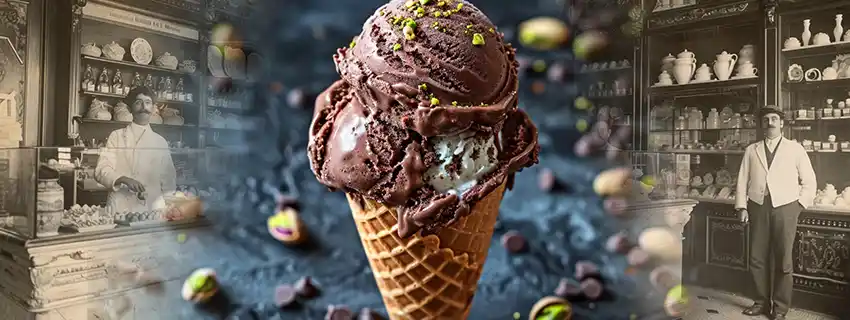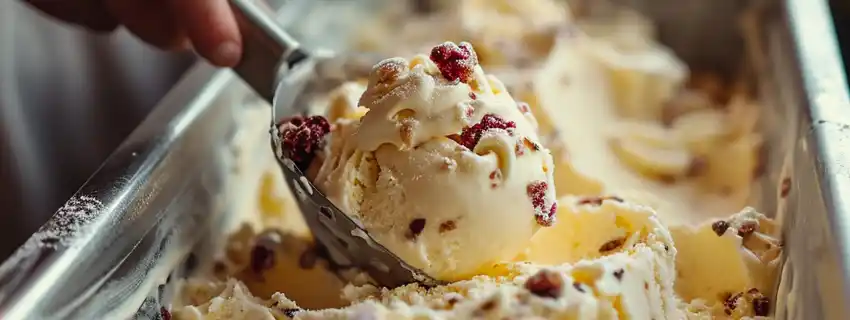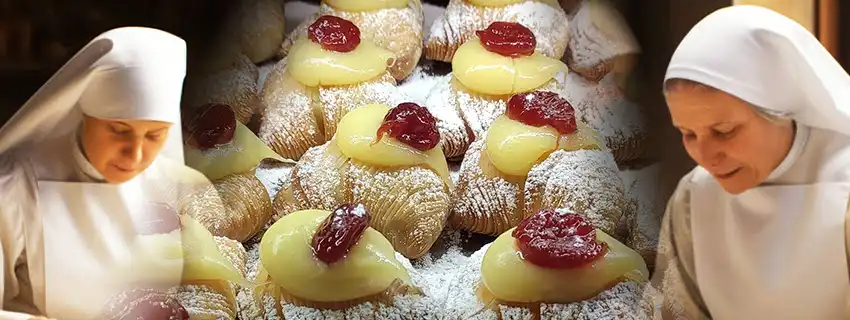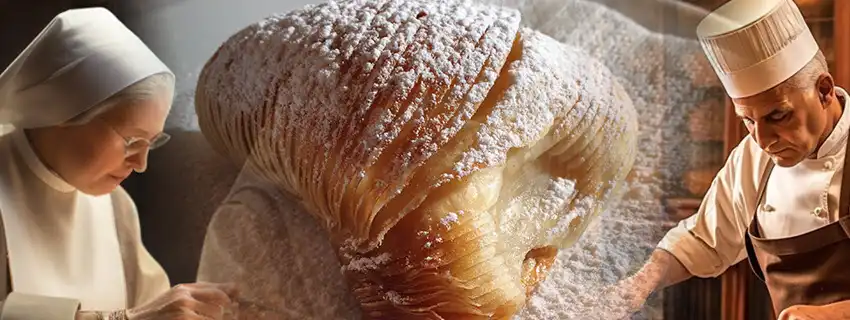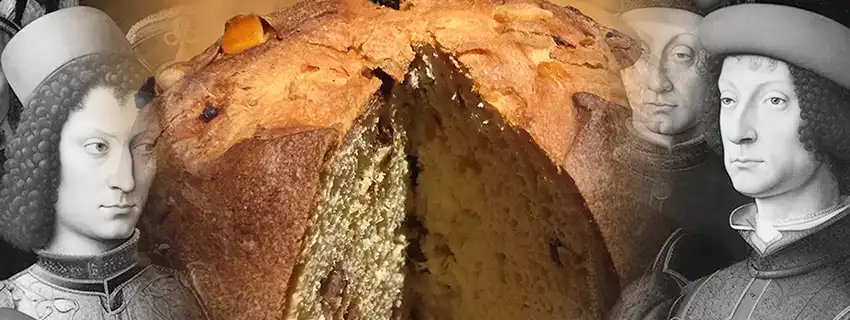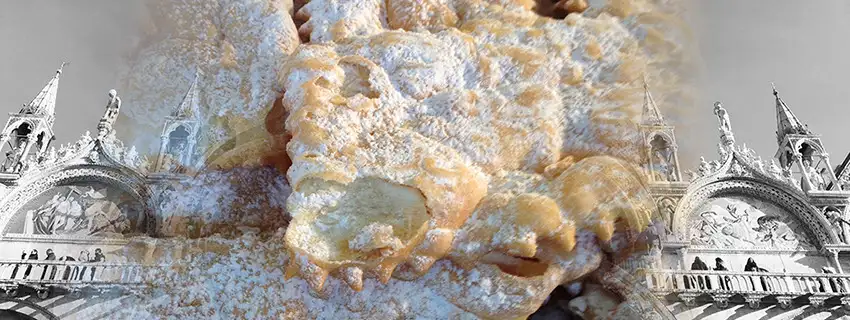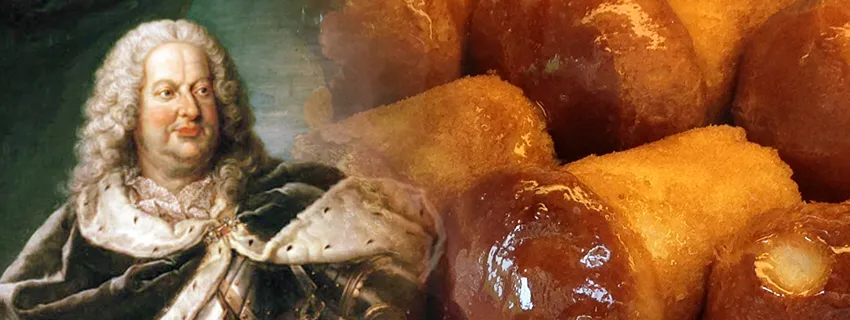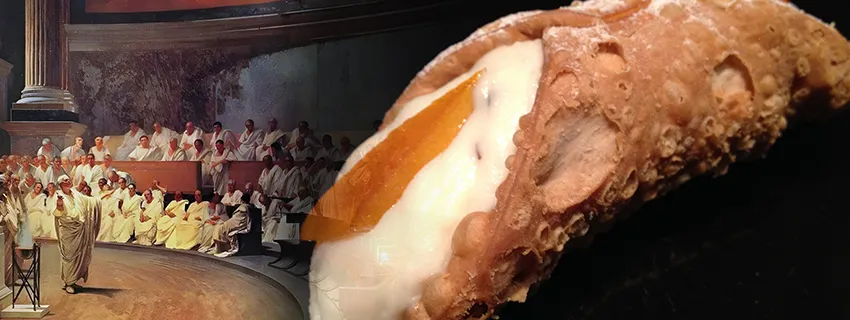Published:
Author: Antonio Maria Guerra
Italian Desserts
The Most Typical Specialties

Welcome! This section of WebFoodCulture is dedicated to the most typical Italian desserts. We will explain what makes them so special and inimitable, starting with their history and places of origin, all seasoned with a large number of curiosities. Finally, we will discover their most traditional producers, thanks to which it will be possible to savor the most authentic taste of these delicacies. Enjoy the reading!
Let’s discover the fascinating history of Modica chocolate, the Sicilian confectionery specialty heir to a distant past. Let’s deepen our knowledge of its most traditional method of preparation. Let’s season the whole thing with interesting information and many curiosities. (read more)
Origin: Modica (Sicily) Typology: Desserts
Last update
Cannolo is a pastry rich in symbolic meaning: a fascinating mix of sacred and profane. Let’s consider, for example, its origins: some claim it was invented by the concubines of an emir, some others by the nuns of a convent. The devil and holy water. In addition to this, many think there is a resemblance between its shape and that of a penis. (read more)
Let’s discover all characteristics and the secrets of a sweet delicacy that, thanks to an ancient method of preparation, can boast a unique texture that enhances the flavor of cocoa.
(read more)
Origin: Naples (Campania) Typology: Desserts
It is said that the recipe of the Original Sachertorte, invented by Franz Sacher and ‘perfected’ by his son Eduard, hides a secret: something that, if possible, makes this cake even more fascinating. (read more)
Specialties from the world
Ice cream is one of those Italian specialties that can be tasted all around the world. Its origins are very ancient and it took centuries of evolution to acquire the form currently marketed.
(read more)
Origin: Italy
Typology: Desserts
Although ice cream is one of the most reknown and appreciated specialties worldwide, very few people know how its finest type, the ‘artisanal ice cream’, is made. In this article, we will explain the required steps to produce this icy delicacy. (read more)
Origin: Italy
Typology: Desserts
As it often happens, over time variants of the more traditional gastronomic specialties arise. Babà is no exception: nowadays it’s possible to taste it accompanied, for example, by custard, whipped cream or chocolate. (read more)
Pastiera is one of the most typical desserts of the city of Naples. A specialty with very ancient origins, rich in religious symbols linking it to the theme of resurrection in particular: it’s therefore no coincidence that it’s considered the Neapolitan Easter dessert par excellence.. (read more)
Origin: Naples (Campania) Typology: Desserts
‘Ruoto’: the baking pan for Pastiera.
‘Ruoto’ is the Neapolitan dialectal name for the particular aluminum baking pan generally used for the cooking of Pastiera. Round in shape, its edge is smooth and of varying height.
(read more)
Few people know that the Neapolitan sfogliatella, the famous pastry dessert, is nothing else than the evolution of another one, known as ‘Santa Rosa’, born a few dozen kilometers from the ‘City of the Sun’, on the Amalfi Coast. (read more)
Origin: Amalfi Coast (Campania)
Typology: Desserts
Non c’è dubbio che la sfogliatella napoletana faccia parte a buon diritto dell’Olimpo dolciario partenopeo, insieme a delizie di fama internazionale quali il Babà, gli Struffoli e la Pastiera. Si tratta di una preparazione semplice con un gusto unico. (continua)
Origin: Naples (Campania)
Typology: Desserts
Although ice cream can be enjoyed in various ways, accompanying it to a cone is considered by many the classic one. It’s surprising to find out that this was not always the case: for very long years, the icy specialty was served in glass cups which, despite being more elegant, had annoying drawbacks such as impracticality and possible accidental breakages. (read more)
Struffoli (singular: ‘Struffolo’), are the Neapolitan variant of a sweet specialty widespread, with different names and specific characteristics, in a great part of the Mediterranean countries: from Spain to Greece, up to Turkey. (read more)
Origin: Naples (Campania) Typology: Desserts
The size of Neapolitan Struffoli.
It’s quickly explained: these dimensions, by considerably increasing the surface, allow the dessert to be seasoned with a greater amount of honey, all to the benefit of its taste.
(read more)
Panettone is one of the most typical Italian Christmas cakes. Its origins are deeply rooted in the distant past of the city of Milan: some scholars think they could be traced back to the Classical Era. Let’s deepen the knowledge of this fascinating specialty. (read more)
Origin: Milan (Lombardy)
Typology: Desserts
Pandoro is, together with Panettone, one of the ‘classics’ of the Italian Christmas holidays. It’s a simple dessert, with an austere personality. The specialty owes its success to the elegance of its taste and appearance. (read more)
Origin: Verona (Veneto)
Typology: Desserts
According to tradition, sfogliatella Santa Rosa was invented in a monastery on the Amalfi Coast from which it took its name. The structure, built in the 17th century, originally was a Dominican convent. Particularly striking is its location, overlooking the splendid sea of the Bay of Conca dei Marini. Currently the building is a luxury hotel (official website). (read more)
The Venetian Carnival: an event unique in the world, renewing its magic year after year. During its celebrations, the pastry chefs of the Doge’s city make delicious ‘Frittelle’: let’s taste this sweet specialty, finding out its history and secrets. (read more)
Origin: Venice (Veneto)
Typology: Desserts
‘Galani’ are, along with frittelle, the quintessential Venetian carnival sweets. The origins of this specialty date back to the distant past: some experts claim that they are the descendants of the Roman ‘frictilia’, served during the ‘Saturnalia’ festivities. (read more)
Origin: Venice (Veneto)
Typology: Desserts

“Marriage is a dinner that begins with dessert”. (Jules Sandeau)
Probably not everyone knows that the origins Babà, the famous Neapolitan sweet, are linked to a region located in the North-East of France, Lorraine, and to a Polish king, Stanisław Leszczyński.
(read more)
Origin: Naples (Campania)
Typology: Desserts
Establishing with precision the origins of Sicilian Cannoli is not an easy task: we know for sure that it was the year 70 BC when, in one of his writings, the famous Roman orator Marcus Tullius Cicero described a very similar dessert. (read more)
Origin: Sicily
Typology: Desserts
Sachertorte: its taste is both austere and elegant. Characteristics it has in common with the city where it was born: Vienna. It’s hard to savor it without hearing the echo of a waltz, the passage of a coach or the clink of a Hussar sword. (read more)
Origin: Vienna (Austria) Typology: Desserts
Specialties from the world
Copyright information.
To get copyright information about the images on this page, please refer to the copyright section of each article.





